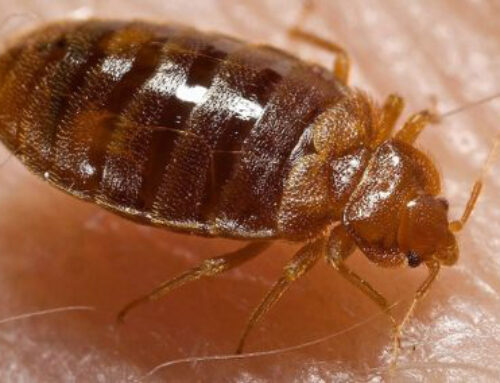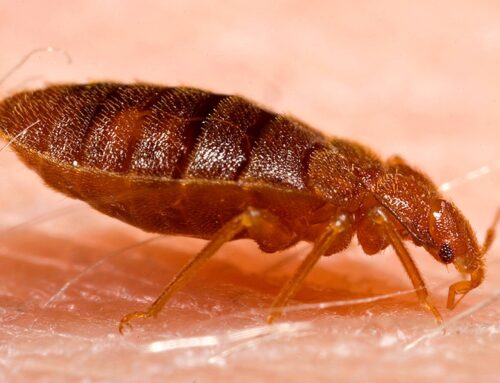Bed bugs are a challenge for daycare centers. They don’t care if a space is clean or messy. They just need a way in. In places where kids, parents, and staff come and go all day, these pests find plenty of chances to hitch a ride. But you can take steps, such as doing routine inspections, to lower the risk and act fast if bed bugs show up.
This guide explains how to handle daycare bed bugs with clear, practical steps. You’ll learn how to spot early signs, cut down on hiding spots, and work with staff and families to stop bed bugs before they spread.

Why Daycare Centers Face Bed Bug Risks
Daycares are busy places. Every day, kids bring in backpacks, blankets, and toys from home. Parents and staff carry in coats and bags. Bed bugs travel on these items, slipping into nap mats, cubbies, and soft toys. Once inside, they hide in cracks, seams, and fabrics, which are places that are difficult to check without special equipment.
Unlike lice, bed bugs don’t live on people. They hide nearby and come out at night or during nap times to feed. This makes them hard to catch early, especially in a busy setting where lots of things are moving around, like a daycare, for example.
How Bed Bugs Get In
Bed bugs are sneaky. They don’t fly or jump, but they’re expert hitchhikers.
Here’s how they often find their way into daycare centers:
- Backpacks, diaper bags, and coats brought from home
- Secondhand furniture or toys
- Visitors’ clothing and personal items
- Items stored together in shared spaces
A single bug or egg can start a problem. Bed bugs can survive for months without feeding, so even items that haven’t been used in a while can bring them in. That’s why it’s important to stay alert and check often.
Early Signs to Watch For
When it comes to pest control for bed bugs, early detection makes a big difference. The sooner you spot them, the easier it is to stop them from spreading. Staff should know what to look for and where to look.
Some signs to watch for include:
- Small reddish-brown bugs, about the size of an apple seed
- Tiny white eggs or shed skins in seams of mattresses, nap mats, or furniture
- Small dark spots (droppings) on bedding, cots, or cubbies
- Itchy red bites, often in lines or clusters, on exposed skin
Train all staff to recognize these signs. Use reference images and show examples during staff meetings. Encourage everyone to report anything suspicious, even if they’re not sure.
If you find any of these signs, don’t ignore them. Investigate right away. A quick response can keep a small problem from becoming a big one.
Daily Habits That Reduce Risk
Preventing bed bugs takes regular effort. Small habits, done every day, can make a big difference. Think of it as part of your daily routine, like hand-washing or tidying up.
Start by inspecting high-risk areas. Check nap mats, cots, and upholstered furniture often. Use a flashlight to look in seams and crevices, where bed bugs like to hide. Cleaning floors and carpets daily helps, too. Vacuuming removes bugs and eggs, but make sure to empty the vacuum outside right away.
It also helps to store personal items separately. Give each child a cubby or locker. Use sealed plastic bags or bins for extra clothing, bedding, or plush toys. This keeps bugs from moving between items.
Limit what comes in from home. Ask families not to send in blankets or stuffed animals unless needed. If they do, keep these items sealed when not in use. Soft items like plush toys and blankets should go through a hot dryer for at least 20 minutes to kill bugs and eggs.
After you’ve done your daily checks and cleaning, keep an eye out for anything unusual. If you see something, act fast.
Educate and Involve Everyone
Bed bug prevention works best when everyone helps. Staff, parents, and even children (in age-appropriate ways) can play a part.
Train staff to spot signs and respond quickly. Hold regular meetings to review what to look for and what to do if they find something. Give staff a clear protocol to follow.
Share information with parents about what to look for at home. Ask families to check their child’s belongings before coming to daycare. If staff have bed bugs at home, help them take steps to avoid bringing them in. Isolate their belongings at work and encourage treatment at home.
When everyone understands the risks and steps, prevention becomes a shared goal.
How Professional Inspections Help
Sometimes, even with strong habits, bed bugs slip through. Professional inspections offer another layer of protection. Trained inspectors know where to look and can spot signs that others might miss. Some use specially trained dogs that can sniff out even a single bug or egg hidden deep in a room.
These inspections are quick and accurate. If you have a suspected problem, a professional can confirm it before it spreads. They can also check the whole facility to make sure you’re clear after treatment.
Regular inspections-once or twice a year, or after any report of bed bugs-help catch issues early. This keeps problems small and easier to fix.
Long-Term Prevention
Once you’ve dealt with bed bugs, keep up your guard. Schedule regular professional inspections, continue daily cleaning and checks, keep clutter low, update your response plan as needed, and stay in touch with families and staff.
Bed bugs are persistent, but remember, so are you.





